#qkd
Text

They're sisters?! >:D
Aka more QKD fanart because... yes :)
#first time drawing Annabeth in a WHILE#it would be so easy to cosplay Amity... all I'm missing is the camp shirt#the quest for the keys of death#qkd#the owl house#toh#the owl house fanfiction#fanfiction fanart#the owl house amity#toh amity#amity blight#pjo#annabeth chase
30 notes
·
View notes
Text
Chapter 8, My Darlings
Wow. I've been writing this AU for about a month now. My doc is currently at 100+ pages, and we're almost to 50k words. Thank you to everyone who's been a faithful reader of my project, your support means so much!!
Chapter 8 is a long one; I had a lot to set up and a lot to reveal, so the length was needed. I had a lot of fun writing this one, so I hope you have a lot of fun reading. :)
Plus, could it be...? Hints of Lumity??

#the quest for the keys of death#qkd#the owl house#toh#owl house#luz noceda#luz toh#toh luz#hunter toh#toh hunter#amity blight#toh amity#toh willow#willow park#toh vee#vee noceda#gus porter#gus toh#lumity#huntlow#aladarius#pjo au#the owl house fanfiction#owl house fanfiction#toh fanfic
31 notes
·
View notes
Text
A point-to-point long-distance quantum key distribution (QKD) over a distance of 1,002 km has been achieved by scientists from the University of Science and Technology of China (USTC) of the Chinese Academy of Sciences (CAS), and their collaborators from Tsinghua University, Jinan Institute of Quantum Technology, and Shanghai Institute of Microsystem and Information Technology (SIMIT), CAS. This milestone not only sets a new world record for non-relay QKD but also provides a solution for high-speed intercity quantum communication. The results were published in Physical Review Letters on May 25th.
QKD is based on the principles of quantum mechanics and enables secure key distribution between two remote parties. When combined with the "one-time pad" encryption method, it can achieve the highest level of security for confidential communication. However, the distance of QKD has been limited by factors such as the channel loss and system noise.
The twin-field QKD (TF-QKD) using sending-or-not-sending (SNS) protocol was demonstrated in the experiment, improving the relation between the key rate and channel transmittance from a linear η to its square root η. Therefore, it can achieve a much longer secure distance than traditional QKD protocols.
To achieve long-distance QKD, the research team collaborated with Yangtze Optical Fiber and Cable Joint Stock Limited Company (YOFC) and used ultra-low-loss fiber based on pure silica core technology, which achieved a maximum attenuation of 0.16 dB/km. SIMIT developed ultra-low-noise superconducting single-photon detectors.
By implementing multiple filters at temperatures of 40 K and 2.2 K to suppress dark counts caused by thermal radiation, the noise of the single-photon detectors was reduced to around 0.02 cps. Furthermore, the team also developed a dual-band phase estimation scheme to avoid the spontaneous Raman scattering noise, reducing the system noise to below 0.01 Hz.
Based on the aforementioned technological developments, the team achieved TF-QKD over a record distance of 1,002 km, with a key rate of 0.0034 bps. This work not only verifies the feasibility of the SNS-TF-QKD scheme at extremely long distances but also demonstrates that this protocol can achieve high key rates in many practical scenarios.
The success of this study holds significant implications for the advancement of secure quantum communication. It opens up new possibilities for long-distance quantum key distribution and paves the way for the realization of high-speed intercity quantum communication networks.
4 notes
·
View notes
Text
The Quantum Enigma: How Unbreakable Code and Lightning Speed Will Change Everything
The Quantum Enigma: How Unbreakable Code and Lightning Speed Will Change Everything #quantumcomputing #dataencryption #dataprocessing #technology #science #quantumsupremacy #quantumcryptography #QKD #cybersecurity #futureofcomputing
Introduction
Imagine a world where the locks on your most sensitive data – bank records, medical histories, even government secrets – could crumble in minutes. That’s the potential danger of quantum computing, but it’s also where the promise of an unprecedented technological revolution lies. The world of computing is on the brink of this seismic shift, fueled by the emergence of quantum…
View On WordPress
#cybersecurity#data encryption#data processing#future of computing#QKD#Quantum Computing#quantum cryptography#quantum supremacy#science#technology
1 note
·
View note
Text
L'Infrastruttura europea di comunicazione quantica
Al via la prima rete quantistica europea. Per la prima volta Italia, Slovenia e Croazia sono state connesse stabilmente tramite EuroQci, l’innovativa rete europea per le comunicazioni quantistiche, pilastro della nuova strategia di sicurezza informatica dell'Unione.
Italia, Slovenia e Croazia sono i primi tre paesi europei ad essere stati collegati tramite EuroQci, l’innovativa rete europea per le comunicazioni quantistiche, a cui l’Italia partecipa con il supporto del Consiglio nazionale delle ricerche (Cnr) e delle università di Firenze e Trieste. Lo riporta la rivista Advanced quantum technologies, che ha pubblicato i risultati della prima dimostrazione pubblica di comunicazione crittografata del programma, effettuata con successo durante la riunione dei ministri del G20 sulla digitalizzazione, svoltosi a Trieste nel 2021.

A giugno 2019, i 27 stati membri dell’Unione europea hanno aderito al progetto EuroQCI, firmando la Dichiarazione sull’infrastruttura europea di comunicazione quantistica. L’obiettivo è di rafforzare la protezione delle istituzioni governative europee, dei loro centri dati, degli ospedali, delle reti energetiche e altro ancora, diventando uno dei pilastri principali della nuova strategia di sicurezza informatica dell'Unione per i prossimi decenni.
EuroQci è coordinata dalla Commissione europea per i collegamenti terrestri in fibra ottica e dall’Agenzia spaziale europea (Esa) per i collegamenti satellitari. Il primo servizio attivato è la Quantum key distribution (Qkd), un protocollo in grado di fornire comunicazioni di dati sicure grazie alle leggi della fisica quantistica, proteggendo da potenziali attacchi. Come sottolinea il comunicato diffuso dal Cnr, qualunque tentativo di intercettare la chiave distribuita attraverso Qkd lascerebbe una traccia usabile per rilevare l'intrusione e di agire contro eventuali minacce.
Dopo la prima dimostrazione pubblica del collegamento Qkd, l’iniziativa EuroQci ha preso ufficialmente il via, collegando stabilmente Trieste a Fiume, con un unico collegamento in fibra di 100 chilometri, e a Lubiana, tramite un trusted node a Postumia, cioè un nodo di ripetizione costituito da una coppia ricevitore-trasmettitore Qkd, in cui i fotoni vengono letti fino a ricostruire la chiave, che poi viene trasmessa sul collegamento adiacente. In questo modo, un link Qkd può essere collegato al successivo per realizzare una rete estesa.
La rete è realizzata grazie all'università di Trieste, al gruppo Quantum communications dell'Istituto nazionale di ottica (Ino) del Cnr di Firenze, alla Technical university of Denmark (Dtu) e all’università di Firenze nell'ambito del “Quantum FVG”, progetto finanziato dalla Regione autonoma Friuli Venezia Giulia, dalla facoltà di Matematica e fisica dell'università di Lubiana, dall'Istituto Ruder Bošković e dalla facoltà di Scienze dei trasporti e del traffico di Zagabria. La realizzazione tecnica è stata curata da Qti srl, spin-off del Cnr e società partecipata Telsy, con il supporto di Tim, Sparkle, Telekom Slovenije, Oiv - Digital signals and networks, Stelkom e Lightnet che hanno fornito l’infrastruttura in fibra ottica.
Read the full article
#Croazia#digitalizzazione#Esa#EuroQci#fibraottica#fisicaquantistica#g20#internetquantistico#italia#QKD#Slovenia
0 notes
Text
Repost with your first ever muse and your most current muse!!!
OLDEST:
((either the most AU amy rose you can think of [who has since turned into one of my OCs, eclaire/E.C.] or

((Shinobu Jacobs from No More Heroes! crude series but i fell in love with her at first sight she's GREAT
((this was also back when i was rping on instant messaging rooms WAAAAAAAY back like in 2008))
MOST CURRENT:

((i could say carol tea, but

((ive got something in the works rn
((wink wonk))
Tagged by: ziltch, nada, none (stole it from @atangledfate who stole it from crime birds)
Tagging: the person reading this :)
#ooc posts#catmun speaks#meme prompts#meme answers#working on the qkd thing in the background itll be up Whenever.
1 note
·
View note
Link
In-depth Understanding of Quantum Key Distribution (QKD) Industry
Industry analysis provides a company with an understanding of its position relative to other companies in the industry. This can help them identify opportunities and potential threats, so they can prepare for the present and future. MRI Research helps organizations to figure out whats happening in a given industry, including demand and supply statistics, degree of competition, state of competition with other emerging industries, future prospects considering technological changes, and external factors on the industry.
0 notes
Text
I should really tag reblogs
#spamt#I don't even reblog that much so I don't have many to look through I dunno why I'm posting this qkd
0 notes
Text
Bitcoin in a Post Quantum Cryptographic World
Quantum computing, once a theoretical concept, is now an impending reality. The development of quantum computers poses significant threats to the security of many cryptographic systems, including Bitcoin. Cryptographic algorithms currently used in Bitcoin and similar systems may become vulnerable to quantum computing attacks, leading to potential disruptions in the blockchain ecosystem. The question arises: What will be the fate of Bitcoin in a post-quantum cryptographic world?

Bitcoin relies on two cryptographic principles: the Elliptic Curve Digital Signature Algorithm (ECDSA) and the SHA-256 hashing function. The ECDSA is used for signing transactions, which verifies the rightful owner of the Bitcoin. On the other hand, the SHA-256 hashing function is used for proof-of-work mechanism, which prevents double-spending. Both principles are expected to become vulnerable in the face of powerful quantum computers.
Quantum Threat to Bitcoin
Quantum computers, due to their inherent nature of superposition and entanglement, can process information on a scale far beyond the capability of classical computers. Shor's Algorithm, a quantum algorithm for factoring integers, could potentially break the ECDSA by deriving the private key from the public key, something that is computationally infeasible with current computing technology. Grover's Algorithm, another quantum algorithm, can significantly speed up the process of finding a nonce, thus jeopardizing the proof-of-work mechanism.
Post-Quantum Cryptography
In a post-quantum world, Bitcoin and similar systems must adapt to maintain their security. This is where post-quantum cryptography (PQC) enters the scene. PQC refers to cryptographic algorithms (usually public-key algorithms) that are thought to be secure against an attack by a quantum computer. These algorithms provide a promising direction for securing Bitcoin and other cryptocurrencies against the quantum threat.
Bitcoin in the Post Quantum World
Adopting a quantum-resistant algorithm is a potential solution to the quantum threat. Bitcoin could potentially transition to a quantum-resistant cryptographic algorithm via a hard fork, a radical change to the blockchain protocol that makes previously invalid blocks/transactions valid (or vice-versa). Such a transition would require a complete consensus in the Bitcoin community, a notoriously difficult achievement given the decentralized nature of the platform.
Moreover, the Bitcoin protocol can be updated with quantum-resistant signature schemes like the Lattice-based, Code-based, Multivariate polynomial, or Hash-based cryptography. These cryptosystems are believed to withstand quantum attacks even with the implementation of Shor's Algorithm.
Additionally, Bitcoin could integrate quantum key distribution (QKD), a secure communication method using a cryptographic protocol involving components of quantum mechanics. It enables two parties to produce a shared random secret key known only to them, which can be used to encrypt and decrypt messages.
Conclusion
In conclusion, the advent of quantum computers does indeed pose a threat to Bitcoin's security. However, with the development of post-quantum cryptography, there are potential solutions to this problem. The future of Bitcoin in a post-quantum world is likely to depend on how quickly and effectively these new cryptographic methods can be implemented. The key is to be prepared and proactive to ensure the longevity of Bitcoin and other cryptocurrencies in the face of this new quantum era.
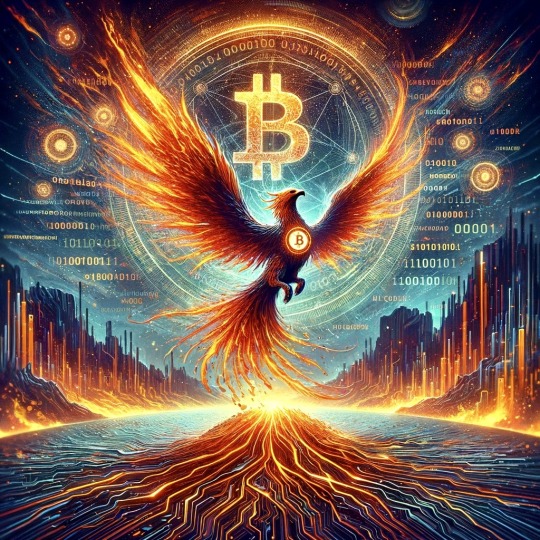
While the quantum threat may seem daunting, it also presents an opportunity - an opportunity to improve, to innovate, and to adapt. After all, the essence of survival lies in the ability to adapt to change. In the end, Bitcoin, like life, will find a way.
#ko-fi#kofi#geeknik#nostr#art#blog#writing#bitcoin#btc#ecdsa#sha256#shor’s algorithm#quantum computing#superposition#entanglement#quantum mechanics#quantum physics#crypto#cryptocurrency#cryptography#encryption#futurism
2 notes
·
View notes
Text

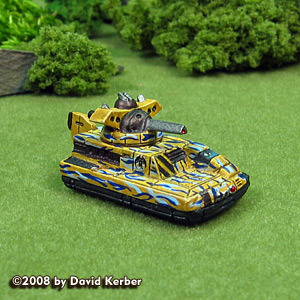



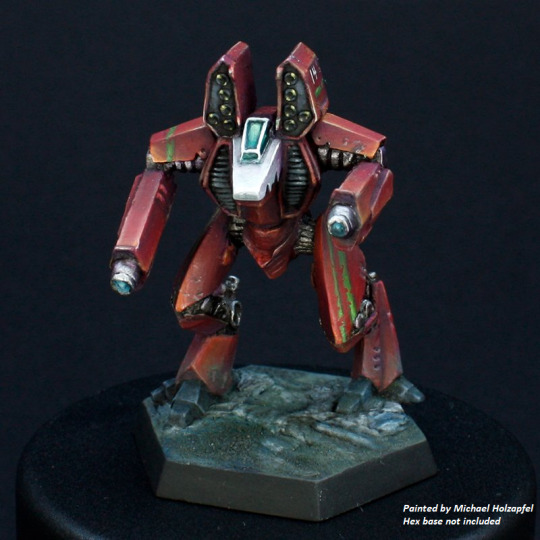
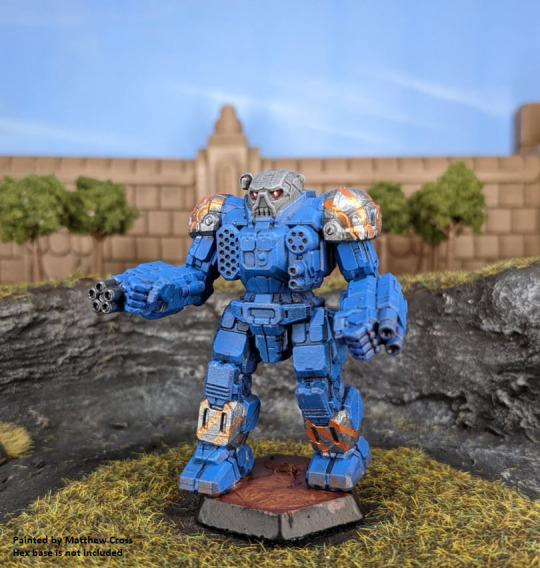

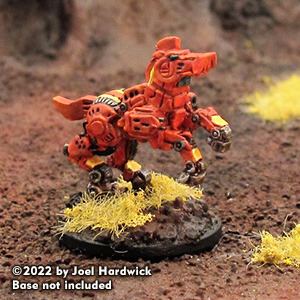

Huge restock from Iron Wind Metals for BattleTech is up!
20-235 Partisan Heavy Tank
20-254 Glory Fire Support Vehicle
20-278 Heavy Hover APC (Standard) (2)
20-302 Morrigu Fire Support Vehicle
20-310 Forestry / Forestry MOD Variants
20-333 Chaparral Missile Tank (2)
20-337 Thor "Summonor" Prime
20-344 Flashfire FLS-P5
20-382 Heavy LRM Carrier
20-403 JES II Strategic Missile Carrier
20-406 Preta C-PRT-O Invictus
20-411 Deva C-DVA-O Invictus
20-439 Dart DRT-3S / DRT-4S
20-444 Atlas II AS7-D-H
20-455 Plainsman Hover Tank (2)
20-459 Vedette Medium Tank (Ultra) (2)
20-5019 Kestrel VTOL
20-5028 Osprey OSP-26
20-5061 Osteon Prime
20-5082 Gyrfalcon (Standard)
20-5101 Gunsmith CH11-NG
20-5102 Eyrie (Standard)
20-5106 Tiburon
20-5111 Night Stalker NSR-K3
20-5150 Anubis ABS-5Y
20-5178 Quickdraw QDK-8P
20-5193 Hierofalcon Prime / A
20-5198 Atlas AS7-D-H / H2
20-5208 Amarok Standard
20-616 Grand Titan TIT-N10M
20-622 Nightsky NGS-4S
20-682 Komodo KIM-2
20-693 No-Dachi NKA-1K
20-713 Slayer Fighter SL-15
20-723 Warrior Helicopter H-7
20-727 Karnov UR Transport
20-749 Goblin Infantry Support Vehicle (2)
20-755 Spartan SPT-N2
20-761 Devastator DVS-2
20-763 Maelstrom MTR-5K
20-772 Caesar CES-3R
20-783 J. Edgar Hover Light Tank (2)
20-788 Sentinel STN-3L
20-800 Hex Bases (4)
20-822 Demolisher Tank
20-847 Awesome AWS-9Q
20-865 Commando COM-2D
20-872 Quickdraw QKD-4G
20-885 Hermes II HER-2S
20-901 Trebuchet TBT-5N
20-904 O-Bakemono OBK-M10
20-983 Mad Cat Mk II
99-201 Large Flat Top Hex Base #1
99-202 Large Flat Top Hex Base #2
99-203 Extra Large Flat Top Hex Base
AC-006 Flight Base
AC-011 Flight Base Thin Wire (.047)
BT-001 Orc Protomech
BT-004 Afreet Battle Armor
BT-005 Grenadier Battle Armor
BT-007 Rottweiler Battle Armor
BT-008 Void Battle Armor
BT-020 Leopard CV
BT-023 Overlord
BT-028 Cavalier Battle Armor
BT-029 Sloth Battle Armor
BT-030 Sylph Battle Armor
BT-031 Infiltrator MK 2
BT-065 Minigun Cycle
BT-068 Trinity (Asterion) Battle Armor
BT-074 Corsair Micro Fighter
BT-096 Stuka Micro Fighter
BT-097 Chippewa Micro Fighter
BT-110 Sholagar Micro Fighter
BT-114 Sparrowhawk Micro Fighter
BT-118 Shilone Micro Fighter
BT-128 Tornado Battle Armor
BT-133 Corona Battle Armor
BT-134 Gray Death Legion Battle Armor
BT-187 Djinn Battle Armor
BT-189 Kobold Battle Armor
BT-198 Tengu Battle Armor
BT-199 Asura Md. Battle Armor
BT-200 Shedu Assault Battle Armor
BT-201 Nephilim Assault Battle Armor
BT-207 Delphyne ProtoMech
BT-209 Se'irim Medium Battle Armor
BT-222 Tau Wraith
BT-223 Tau Zombie
BT-224 Heavy Jump Infantry
BT-237 Recon Infantry
BT-238 VTOL Infantry
BT-239 Jump Support Infantry
BT-245 Heavy Infantry - Firing
BT-260 Sprint Scout VTOL
BT-297 Ares ARS-V1A Hera
BT-299 Ares ARS-V1C Aphrodite
BT-320 Tracked APC
BT-321 Hover APC
BT-364 Gabriel Hovercraft
BT-370 Kurita Infantry (3)
BT-372 Savannah Master Hovercraft
BT-373 Centaur Protomech
BT-374 Roc Protomech
BT-376 Minotaur Protomech
BT-381 Basic Inner Sphere Battle Armor (3)
BT-383 Longinus Battle Armor (3)
BT-384 Achileus Battle Armor (3)
BT-388 Salamander Battle Armor (3)
BT-391 Fenrir Battle Armor (1)
BT-408 Loki II A
BT-413 Marauder Battle Armor
BT-425 Uziel UZL-8S
BT-427 Balac Strike VTOL (Standard) & (LRM)
BT-436 Buraq (Standard) Battle Armor
BT-460 Saxon APC Standard / Laser / HQ
BT-470 Sojourner C
BT-476 Ares ARS-V1E Apollo
FT-015 Lynx LNX-9C
OP-060 Masakari H Right Arm
Tripod Six Pack
battletech #alphastrike #ironwindmetals #battletechalphastrike #miniatures #catalystgamelabs #battlemech #battletechminiatures #battletechpaintingandcustoms #mecha #tabletop #tabletopgames #tabletopgaming #wargaming #wargames #hobby #scifi #sciencefiction #miniaturepainting #mech #hovertank #6mmminis #6mmscifi #feldherr #dougram #gundam #robotech #armypainter #thearmypainter #chessex
3 notes
·
View notes
Text
QKD -- Hiatus
Hey, my lovely QKD readers! As I mentioned in the notes on my last chapter, I'll be taking a hiatus as production season ramps up for the play I'm in. I'm also struggling with Chapter 9, so this gives me a chance to reorient myself.
I plan to be back by mid-April, but it may be sooner or later, depending on how life works out.
But stay tuned, I may post some one-shots (AU and otherwise) during the hiatus to keep my writing gears greased.
Thanks to those of you who have been so faithful to read and comment on my story, you mean so, so much to me!!
Until next time <3

#the quest for the keys of death#qkd#qkd updates#the owl house#toh#owl house#the owl house fanfiction#owl house fanfiction#toh fanfic#toh fandom#owl house fandom#fanfiction#fanfic#ao3 fanfic#pjo fanfic#pjo au
9 notes
·
View notes
Text
Power of Quantum Computing 02

Utilizing the Potential of Quantum Computing.
A revolutionary technology, quantum computing holds the promise of unmatched computational power. Development of quantum software is in greater demand as the field develops. The link between the complicated underlying hardware and the useful applications of quantum computing is provided by quantum software. The complexities of creating quantum software, its potential uses, and the difficulties developers face will all be covered in this article.

BY KARTAVYA AGARWAL
First, a primer on quantum computing.
Contrary to traditional computing, quantum computing is based on different principles. Working with qubits, which can exist in a superposition of states, is a requirement. These qubits are controlled by quantum gates, including the CNOT gate and the Hadamard gate. For the creation of quantum software, comprehension of these fundamentals is essential. Qubits and quantum gates can be used to create quantum algorithms, which are capable of solving complex problems more quickly than conventional algorithms.
Second, there are quantum algorithms.
The special characteristics of quantum systems are specifically tapped into by quantum algorithms. For instance, Shor's algorithm solves the factorization issue and might be a threat to traditional cryptography. The search process is accelerated by Grover's algorithm, however. A thorough understanding of these algorithms and how to modify them for various use cases is required of quantum software developers. They investigate and develop new quantum algorithms to address issues in a variety of fields, including optimization, machine learning, and chemistry simulations.
Quantum simulation and optimization are the third point.
Complex physical systems that are difficult to simulate on traditional computers can be done so using quantum software. Scientists can better comprehend molecular structures, chemical processes, and material properties by simulating quantum systems. Potential solutions for logistics planning, financial portfolio management, and supply chain optimization are provided by quantum optimization algorithms. To accurately model these complex systems, quantum software developers work on developing simulation frameworks and algorithm optimization techniques.
The 4th Point is Tools and Languages for Quantum Programming.
Programming languages and tools that are specific to quantum software development are required. A comprehensive set of tools and libraries for quantum computing are available through the open-source framework Qiskit, created by IBM. Another well-known framework that simplifies the design and simulation of quantum circuits is Cirq, created by Google. Incorporating quantum computing with traditional languages like C, the Microsoft Quantum Development Kit offers a quantum programming language and simulator. These programming languages and tools are utilized by developers to create quantum hardware, run simulations, and write quantum circuits.
The 5th point is quantum error correction.
Störungs in the environment and flaws in the hardware can lead to errors in quantum systems. Quantum computations are now more reliable thanks to quantum error correction techniques that reduce these errors. To guard against errors and improve the fault tolerance of quantum algorithms, developers of quantum software employ error correction codes like the stabilizer or surface codes. They must comprehend the fundamentals of error correction and incorporate these methods into their software designs.
Quantum cryptography and secure communication are the sixth point.
Secure communication and cryptography are impacted by quantum computing.
Using the concepts of quantum mechanics, quantum key distribution (QKD) offers secure key exchange and makes any interception detectable. Post-quantum cryptography responds to the danger that quantum computers pose to already-in-use cryptographic algorithms. To create secure communication protocols and investigate quantum-resistant cryptographic schemes, cryptographers and quantum software developers work together.
Point 7: Quantum machine learning
A new field called "quantum machine learning" combines machine learning with quantum computing. The speedup of tasks like clustering, classification, and regression is being studied by quantum software developers. They investigate how quantum machine learning might be advantageous in fields like drug discovery, financial modeling, and optimization.
Point 8: Validation and testing of quantum software.
For accurate results and trustworthy computations, one needs trustworthy quantum software. Different testing methodologies are used by quantum software developers to verify the functionality and efficiency of their products. To locate bugs, address them, and improve their algorithms, they carry out extensive testing on simulators and quantum hardware. Quantum software is subjected to stringent testing and validation to guarantee that it produces accurate results on various platforms.
Point 9: Quantum computing in the study of materials.
By simulating and enhancing material properties, quantum software is crucial to the study of materials. To model chemical processes, examine electronic architectures, and forecast material behavior, researchers use quantum algorithms. Variational quantum eigensolvers are one example of a quantum-inspired algorithm that makes efficient use of the vast parameter space to find new materials with desired properties. To create software tools that improve the processes of materials research and discovery, quantum software developers work with materials scientists.
Quantum computing in financial modeling is the tenth point.
Quantum software is used by the financial sector for a variety of applications, which helps the industry reap the benefits of quantum computing. For portfolio optimization, risk assessment, option pricing, and market forecasting, quantum algorithms are being investigated. Financial institutions can enhance decision-making processes and acquire a competitive advantage by utilizing the computational power of quantum systems. Building quantum models, backtesting algorithms, and converting existing financial models to quantum frameworks are all tasks carried out by quantum software developers.

FAQs:.
What benefits can software development using quantum technology offer?
Complex problems can now be solved exponentially more quickly than before thanks to quantum software development. It opens up new opportunities in materials science, machine learning, optimization, and cryptography.
Is everyone able to access quantum software development?
Despite the fact that creating quantum software necessitates specialized knowledge, there are tools, tutorials, and development frameworks available to support developers as they begin their quantum programming journey.
What are the principal difficulties faced in creating quantum software?
Algorithm optimization for particular hardware, minimization of quantum errors through error correction methods, and overcoming the dearth of established quantum development tools are among the difficulties.
Are there any practical uses for quantum software?
Yes, there are many potential uses for quantum software, including drug discovery, financial modeling, traffic optimization, and materials science.
What can be done to advance the creation of quantum software?
Researchers, programmers, contributors to open-source quantum software projects, and people working with manufacturers of quantum hardware to improve software-hardware interactions are all ways that people can make a difference.
Conclusion:
The enormous potential of quantum computing is unlocked in large part by the development of quantum software. The potential for solving difficult problems and revolutionizing numerous industries is exciting as this field continues to develop. We can use quantum computing to influence the direction of technology by grasping its fundamentals, creating cutting-edge algorithms, and utilizing potent quantum programming languages and tools.
link section for the article on Quantum Software Development:
- Qiskit - Website
- Qiskit is an open-source quantum computing framework developed by IBM. It provides a comprehensive suite of tools, libraries, and resources for quantum software development.
- Cirq - Website
- Cirq is a quantum programming framework developed by Google. It offers a platform for creating, editing, and simulating quantum circuits.
- Microsoft Quantum Development Kit - Website
- The Microsoft Quantum Development Kit is a comprehensive toolkit that enables quantum programming using the Q# language. It includes simulators, libraries, and resources for quantum software development.
- Quantum Computing for the Determined - Book
- "Quantum Computing for the Determined" by Alistair Riddoch and Aleksander Kubica is a practical guide that introduces the fundamentals of quantum computing and provides hands-on examples for quantum software development.
- Quantum Algorithm Zoo - Website
- The Quantum Algorithm Zoo is a repository of quantum algorithms categorized by application domains. It provides code examples and explanations of various quantum algorithms for developers to explore.
Read the full article
2 notes
·
View notes
Text
SKDBEOEJEBDNCKQNDPIRVWX FKQVFKWNZPABFKE GHTVSOSVDKS DGJ ALDBEKS D EIDAKSLBFLW DAK FIAVQKF QKD DODVWKSVE
I LOVE RA*BITS
6 notes
·
View notes
Text
O cabo de fibra óptica de 100 quilômetros por meio do qual uma equipe de pesquisadores da DTU distribuiu com sucesso uma chave criptografada quântica com segurança. Crédito: DTU
Pesquisadores da Universidade Técnica da Dinamarca (DTU) utilizaram com sucesso a criptografia quântica para a transmissão segura de informações a uma distância de 100 quilômetros através de um cabo de fibra óptica, aproximadamente a mesma distância entre Oxford e Londres.
Cientistas do Universidade Técnica da Dinamarca (DTU) alcançaram um avanço na comunicação segura ao distribuir uma chave quântica segura por meio da Distribuição Contínua de Chaves Quânticas Variáveis (CV QKD). Esta equipe estabeleceu um novo recorde ao tornar a técnica eficaz em uma distância sem precedentes de 100 quilômetros, a mais distante já alcançada com o CV QKD. A vantagem do método é que ele pode ser aplicado à infra-estrutura existente da Internet.
Os computadores quânticos ameaçam as criptografias existentes baseadas em algoritmos, que atualmente protegem as transferências de dados contra espionagem e vigilância. Eles ainda não são poderosos o suficiente para quebrá-los, mas é uma questão de tempo. Se um computador quântico conseguir descobrir os algoritmos mais seguros, deixará uma porta aberta para todos os dados conectados via Internet. Isto acelerou o desenvolvimento de um novo método de criptografia baseado nos princípios da física quântica.
Mas para ter sucesso, os investigadores devem superar um dos desafios da mecânica quântica – garantir consistência em distâncias mais longas. Até agora, a distribuição de chaves quânticas variáveis contínuas funcionou melhor em distâncias curtas.
“Conseguimos uma ampla gama de melhorias, principalmente no que diz respeito à perda de fótons ao longo do caminho. Nesta experiência, publicada em Avanços da Ciência, distribuímos com segurança uma chave criptografada quântica por 100 quilômetros por meio de cabo de fibra óptica. Esta é uma distância recorde com este método”, diz Tobias Gehring, professor associado da DTU, que, juntamente com um grupo de pesquisadores da DTU, pretende ser capaz de distribuir informações criptografadas quânticas em todo o mundo através da Internet.
Chaves secretas dos estados quânticos da luz
“Quando os dados precisam ser enviados de A para B, eles devem ser protegidos. A criptografia combina dados com uma chave segura distribuída entre remetente e destinatário para que ambos possam acessar os dados. Um terceiro não deve ser capaz de descobrir a chave enquanto ela está sendo transmitida; caso contrário, a criptografia será comprometida. A troca de chaves é, portanto, essencial na criptografia de dados.
A distribuição quântica de chaves (QKD) é uma tecnologia avançada na qual os pesquisadores estão trabalhando para trocas cruciais. A tecnologia garante a troca de chaves criptográficas usando luz de partículas da mecânica quântica chamadas fótons.
O grupo de pesquisa: (na frente) Adnan AE Hajomer, Nitin Jain, Ulrik L. Andersen (atrás) Ivan Derkach, Hou-Man Chin, Tobias Gehring. Crédito: DTU
Quando um remetente envia informações codificadas em fótons, as propriedades da mecânica quântica dos fótons são exploradas para criar uma chave exclusiva para o remetente e o destinatário. As tentativas de outros de medir ou observar fótons em um estado quântico mudarão instantaneamente seu estado. Portanto, fisicamente só é possível medir a luz perturbando o sinal.
“É impossível fazer uma cópia de um estado quântico, como fazer uma cópia de uma folha A4 – se você tentar, será uma cópia inferior. É isso que garante que não seja possível copiar a chave. Isto pode proteger infraestruturas críticas, como registos de saúde e o setor financeiro, de serem pirateadas”, explica Tobias Gehring.
Funciona através da infraestrutura existente
A tecnologia Continuous Variable Quantum Key Distribution (CV QKD) pode ser integrada à infraestrutura de Internet existente.
“A vantagem de usar essa tecnologia é que podemos construir um sistema que se assemelha ao que a comunicação óptica já utiliza.”
A espinha dorsal da Internet é a comunicação óptica. Funciona enviando dados via luz infravermelha que passa por fibras ópticas. Eles funcionam como guias de luz colocados em cabos, garantindo que possamos enviar dados para todo o mundo. Os dados podem ser enviados mais rapidamente e por distâncias maiores através de cabos de fibra óptica, e os sinais de luz são menos suscetíveis a interferências, o que é chamado de ruído em termos técnicos.
“É uma tecnologia padrão que já é usada há muito tempo. Portanto, você não precisa inventar nada novo para poder usá-lo para distribuir chaves quânticas, e isso pode tornar a implementação significativamente mais barata. E podemos operar à temperatura ambiente”, explica Tobias Gehring, acrescentando:
“Mas a tecnologia CV QKD funciona melhor em distâncias mais curtas. Nossa tarefa é aumentar a distância. E os 100 quilómetros são um grande passo na direção certa.”
Ruído, erros e assistência do aprendizado de máquina
Os pesquisadores conseguiram aumentar a distância abordando três fatores que limitam seu sistema na troca de chaves criptografadas quânticas em distâncias mais longas:
O aprendizado de máquina forneceu medições anteriores dos distúrbios que afetam o sistema. O ruído, como são chamados esses distúrbios, pode surgir, por exemplo, da radiação eletromagnética, que pode distorcer ou destruir os estados quânticos transmitidos. A detecção precoce do ruído permitiu reduzir de forma mais eficaz o seu efeito correspondente.
Além disso, os pesquisadores melhoraram na correção de erros que podem ocorrer ao longo do caminho, que podem ser causados por ruídos, interferências ou imperfeições no hardware.
“No nosso próximo trabalho, utilizaremos a tecnologia para estabelecer uma rede de comunicação segura entre os ministérios dinamarqueses para proteger a sua comunicação. Também tentaremos gerar chaves secretas entre, por exemplo, Copenhaga e Odense, para permitir que empresas com filiais em ambas as cidades estabeleçam comunicações quânticas seguras”, afirma Tobias Gehring.
Referência: “Distribuição de chave quântica variável contínua de longa distância em fibra de 100 km com oscilador local local” por Adnan AE Hajomer, Ivan Derkach, Nitin Jain, Hou-Man Chin, Ulrik L. Andersen e Tobias Gehring, 3 de janeiro de 2024, Avanços da Ciência.
DOI: 10.1126/sciadv.adi9474
O Fundo de Inovação da Dinamarca, a Fundação Nacional de Pesquisa Dinamarquesa, o programa de pesquisa e inovação Horizonte Europa da União Europeia, a Fundação Carlsberg e a Fundação Científica Tcheca apoiam o projeto.
https://w3b.com.br/100-km-sem-precedentes-pesquisadores-estabelecem-novo-recorde-de-distancia-com-chaves-quanticas/?feed_id=5560&_unique_id=664e8fc30e23d
0 notes
Text
O cabo de fibra óptica de 100 quilômetros por meio do qual uma equipe de pesquisadores da DTU distribuiu com sucesso uma chave criptografada quântica com segurança. Crédito: DTU
Pesquisadores da Universidade Técnica da Dinamarca (DTU) utilizaram com sucesso a criptografia quântica para a transmissão segura de informações a uma distância de 100 quilômetros através de um cabo de fibra óptica, aproximadamente a mesma distância entre Oxford e Londres.
Cientistas do Universidade Técnica da Dinamarca (DTU) alcançaram um avanço na comunicação segura ao distribuir uma chave quântica segura por meio da Distribuição Contínua de Chaves Quânticas Variáveis (CV QKD). Esta equipe estabeleceu um novo recorde ao tornar a técnica eficaz em uma distância sem precedentes de 100 quilômetros, a mais distante já alcançada com o CV QKD. A vantagem do método é que ele pode ser aplicado à infra-estrutura existente da Internet.
Os computadores quânticos ameaçam as criptografias existentes baseadas em algoritmos, que atualmente protegem as transferências de dados contra espionagem e vigilância. Eles ainda não são poderosos o suficiente para quebrá-los, mas é uma questão de tempo. Se um computador quântico conseguir descobrir os algoritmos mais seguros, deixará uma porta aberta para todos os dados conectados via Internet. Isto acelerou o desenvolvimento de um novo método de criptografia baseado nos princípios da física quântica.
Mas para ter sucesso, os investigadores devem superar um dos desafios da mecânica quântica – garantir consistência em distâncias mais longas. Até agora, a distribuição de chaves quânticas variáveis contínuas funcionou melhor em distâncias curtas.
“Conseguimos uma ampla gama de melhorias, principalmente no que diz respeito à perda de fótons ao longo do caminho. Nesta experiência, publicada em Avanços da Ciência, distribuímos com segurança uma chave criptografada quântica por 100 quilômetros por meio de cabo de fibra óptica. Esta é uma distância recorde com este método”, diz Tobias Gehring, professor associado da DTU, que, juntamente com um grupo de pesquisadores da DTU, pretende ser capaz de distribuir informações criptografadas quânticas em todo o mundo através da Internet.
Chaves secretas dos estados quânticos da luz
“Quando os dados precisam ser enviados de A para B, eles devem ser protegidos. A criptografia combina dados com uma chave segura distribuída entre remetente e destinatário para que ambos possam acessar os dados. Um terceiro não deve ser capaz de descobrir a chave enquanto ela está sendo transmitida; caso contrário, a criptografia será comprometida. A troca de chaves é, portanto, essencial na criptografia de dados.
A distribuição quântica de chaves (QKD) é uma tecnologia avançada na qual os pesquisadores estão trabalhando para trocas cruciais. A tecnologia garante a troca de chaves criptográficas usando luz de partículas da mecânica quântica chamadas fótons.
O grupo de pesquisa: (na frente) Adnan AE Hajomer, Nitin Jain, Ulrik L. Andersen (atrás) Ivan Derkach, Hou-Man Chin, Tobias Gehring. Crédito: DTU
Quando um remetente envia informações codificadas em fótons, as propriedades da mecânica quântica dos fótons são exploradas para criar uma chave exclusiva para o remetente e o destinatário. As tentativas de outros de medir ou observar fótons em um estado quântico mudarão instantaneamente seu estado. Portanto, fisicamente só é possível medir a luz perturbando o sinal.
“É impossível fazer uma cópia de um estado quântico, como fazer uma cópia de uma folha A4 – se você tentar, será uma cópia inferior. É isso que garante que não seja possível copiar a chave. Isto pode proteger infraestruturas críticas, como registos de saúde e o setor financeiro, de serem pirateadas”, explica Tobias Gehring.
Funciona através da infraestrutura existente
A tecnologia Continuous Variable Quantum Key Distribution (CV QKD) pode ser integrada à infraestrutura de Internet existente.
“A vantagem de usar essa tecnologia é que podemos construir um sistema que se assemelha ao que a comunicação óptica já utiliza.”
A espinha dorsal da Internet é a comunicação óptica. Funciona enviando dados via luz infravermelha que passa por fibras ópticas. Eles funcionam como guias de luz colocados em cabos, garantindo que possamos enviar dados para todo o mundo. Os dados podem ser enviados mais rapidamente e por distâncias maiores através de cabos de fibra óptica, e os sinais de luz são menos suscetíveis a interferências, o que é chamado de ruído em termos técnicos.
“É uma tecnologia padrão que já é usada há muito tempo. Portanto, você não precisa inventar nada novo para poder usá-lo para distribuir chaves quânticas, e isso pode tornar a implementação significativamente mais barata. E podemos operar à temperatura ambiente”, explica Tobias Gehring, acrescentando:
“Mas a tecnologia CV QKD funciona melhor em distâncias mais curtas. Nossa tarefa é aumentar a distância. E os 100 quilómetros são um grande passo na direção certa.”
Ruído, erros e assistência do aprendizado de máquina
Os pesquisadores conseguiram aumentar a distância abordando três fatores que limitam seu sistema na troca de chaves criptografadas quânticas em distâncias mais longas:
O aprendizado de máquina forneceu medições anteriores dos distúrbios que afetam o sistema. O ruído, como são chamados esses distúrbios, pode surgir, por exemplo, da radiação eletromagnética, que pode distorcer ou destruir os estados quânticos transmitidos. A detecção precoce do ruído permitiu reduzir de forma mais eficaz o seu efeito correspondente.
Além disso, os pesquisadores melhoraram na correção de erros que podem ocorrer ao longo do caminho, que podem ser causados por ruídos, interferências ou imperfeições no hardware.
“No nosso próximo trabalho, utilizaremos a tecnologia para estabelecer uma rede de comunicação segura entre os ministérios dinamarqueses para proteger a sua comunicação. Também tentaremos gerar chaves secretas entre, por exemplo, Copenhaga e Odense, para permitir que empresas com filiais em ambas as cidades estabeleçam comunicações quânticas seguras”, afirma Tobias Gehring.
Referência: “Distribuição de chave quântica variável contínua de longa distância em fibra de 100 km com oscilador local local” por Adnan AE Hajomer, Ivan Derkach, Nitin Jain, Hou-Man Chin, Ulrik L. Andersen e Tobias Gehring, 3 de janeiro de 2024, Avanços da Ciência.
DOI: 10.1126/sciadv.adi9474
O Fundo de Inovação da Dinamarca, a Fundação Nacional de Pesquisa Dinamarquesa, o programa de pesquisa e inovação Horizonte Europa da União Europeia, a Fundação Carlsberg e a Fundação Científica Tcheca apoiam o projeto.
0 notes
Note
🌻🌻🌻
new ask game send me a 🌻 and ill just tell you whatever the fuck i want

((1. after using the new post editor vs the old post editor and switching back and forth between them on my blogs, i gotta say! old post editor fucks

((though the new post editor has a TON of QoL changes that elevator to more of an equal status
((like, being able to tell when a special thing like italics starts and stops is a fucking amazing feature and i wish it was on the old post editor
((or being able to edit tags, or being able to make text BIG or BIGGER, or things like that

((but running with the old post editor for a while on the qkd blog has brought about some really funny/interesting bits!






((this gimmick is really fun. it feels like ive been running the blog for months but its only been less than one. i love that blog
((2. speaking of--if things havent been obvious so far, then lemme say it outright right now
((i am going through the entirety of poppy's story on that blog, pre-poppy to... an ending, of sorts
((which means events will just sort of happen over there, in slight congruence to when they happened in poppy. such aaaaaaaaas

((this whole thing! in fact, it's happening in a thread right now~.

((at the end of arcs/events i plan on tagging all of the previous posts that took place in that event as like... a relevant tag, so that i might chrono them and maybe my things can be read as a sort of story. this is... going to be a pain. but! i am incredibly committed to all of this now. i am excited. things are going to fucking happen.

((uh, sorry for all the kit-blog talk. i am just kind of. really excited for that blog! i have this base guideline already set for me to follow and i get to explore how this MF goes through the entirety of what-we-know in poppy. including somee other things that are at play because of the nature of just. knowing more than my characters know

((having characters like lila and chicadino just making funni appearances this early into the story is just so much fun you dont even know.

((sidenote bonus thing but i really want chicadino to interact with @/fallen-symphony crew because like. he's a villain, with an outrageous lucky star at that. it'd be REALLY FUCKING FUN. i wanna do arthur interactions IN GENERAL, REALLY

((but alas. there is literally no conceivable way i could approach first about this without majorly breaking things and his knowledge on the world rn. his little birdy would not know about multiverse theory (yet).

((3. im thinking of like, making some slight changes on this blog? to save myself the sanity? but i dont know how.
((i aint stoppin' playing carol--i love this dumbass just as much as i love kit
((but man oh man i look at the amount of threads i have on here versus the amount i have on kit and its like

((well of course im over there more--i can actually count the things i have to do over there. and one of them finished! and another one has a finish line i can conceivably get to! cant say much for the other threads but im sure a finish line can be gotten.

((i do feel bad that activity has waned over here. again, carol has a lot of shit still happening and a lot of things i still havent properly addressed. the ideas are in my head, its just
((pen has to touch paper, y'know? that's it, that's all it is. i dont wanna take on new threads here because i get this anxiety that its just gonna stall me from actually doing things. i already have important threads that do need to get finished that i simply havent touched in like, weeks.

((maybe i just need to find these threads and hyper focus on them and then like, one or two more things. have something that can keep my sanity, well, sane. because otherwise it is going to be very hard for me to keep up things over here.

((i pray that this same issue doesnt occur on qkd. ive been thinking about implementing a thread cap of sorts, just so the overwhelming thing doesnt happen.

((still need to think about things tho. my mind is being RACKED as of current.))
#ooc posts#catmun speaks#meme answers#asks#aureumdraconeus#as you can see i have kit brainrot rn#hahaaaaaaaa#ha
2 notes
·
View notes